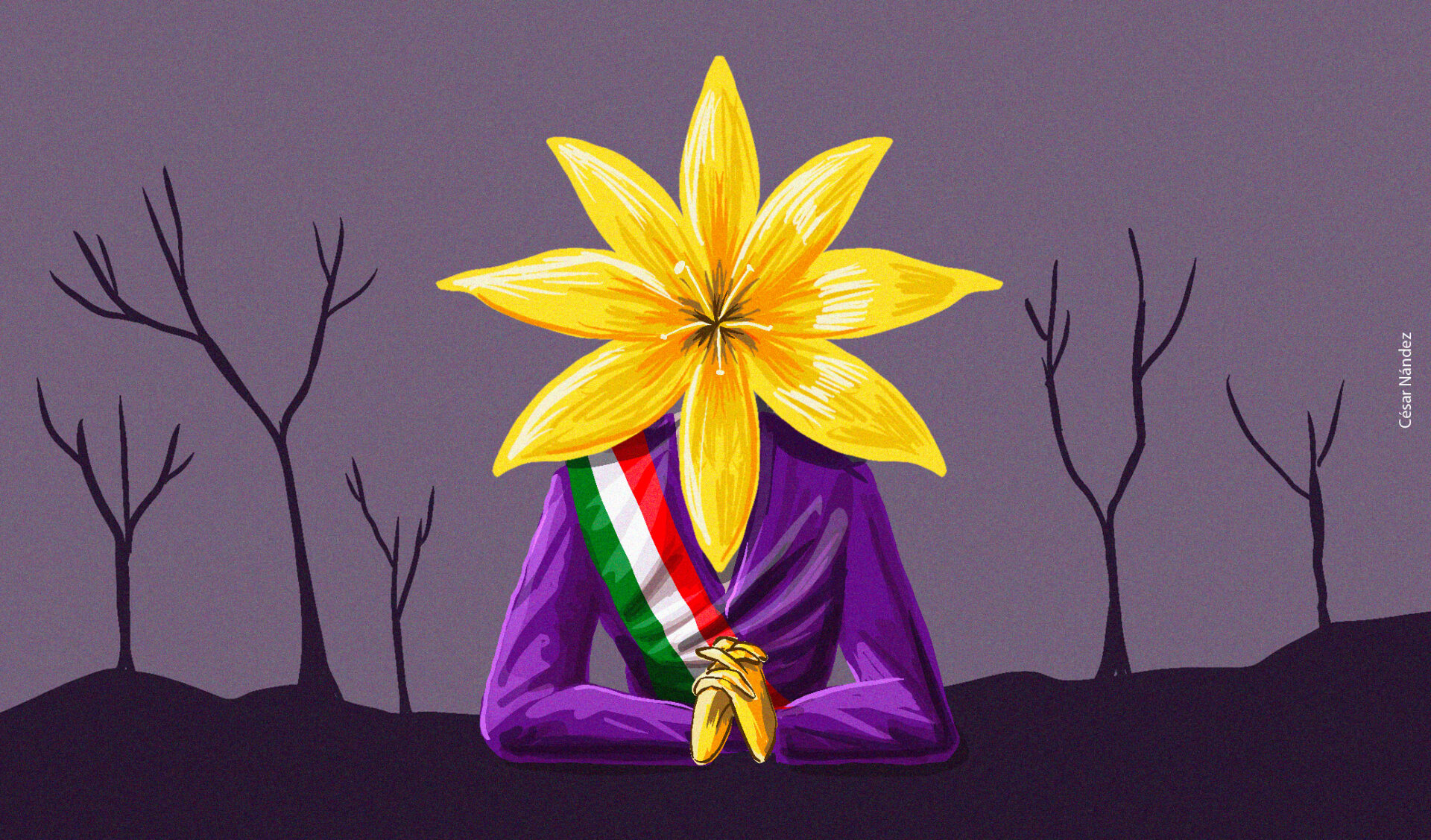Several decades have passed since a woman occupied, for the first time, the highest hierarchy in a country’s executive branch. It was in 1960, in Sri Lanka, where Sirimavo Ratwatte Bandaranaike (1916-2000) was appointed Prime Minister after her party won the majority of votes in Parliament. In the same decade, two more women occupied this position: Indira Gandhi (1917-1984), in India, in 1966, and Golda Meir (1898-1978), in Israel, in 1969.
It should be noted that the women who have held these positions have done so despite the persistence of gender roles and prejudices based on the idea that public spaces for decision-making and the exercise of political power do not belong to them. Furthermore, breaking the glass ceiling shows that the obstacles are not absolute and that a transformation is taking place in the social imagination, regarding women’s capabilities, which, although it seems to be moving at a very slow pace, is unstoppable.
The arrival of women at the highest levels of the Executive affects symbolic representation, even more than that of women parliamentarians due to the visibility of their position. This has been recognized by Michelle Bachelet, twice president of Chile (2006-2010 and 2014-2018), and the most recognized Latin American female politician on the world stage: “if before girls used to tell me they wanted to be doctors, now they tell me they want to be presidents. That is good for the country”.
However, breaking the glass ceiling does not mean that women in the Executive do not face other barriers in the exercise of their political leadership, among which the glass labyrinth stands out, which is linked to the twists, turns, and misunderstandings they go through during their term of office. It involves overcoming more obstacles than those faced by male politicians, some of which are specifically linked to the fact of being a woman.
Nonetheless, perhaps the greatest obstacle that women politicians must face is the glass cliff or precipice. It consists, on the one hand, of women running for elected office in constituencies where their parties have little chance of winning a seat (not infrequently to comply with the gender quota) and, on the other hand, of women being appointed to the Executive at times of serious political crisis when unpopular decisions must be made that put their leadership at risk and can lead to abrupt falls.
British Prime Minister Margaret Thatcher (1925-2013) had experiences linked to the first case: the Conservative Party twice ran her as a candidate in a constituency dominated by the Labour Party, and in both cases, she lost. All this before taking office as prime minister. Concerning the second case, several Latin American women presidents, appointed and not popularly elected, have had to face particularly convulsive moments from the political perspective; their actions have generated rejection from the electorate and strong questioning, where bad political decisions (or even corruption allegations) and the fact of being a woman (Jeanine Áñez in Bolivia and Dina Boluarte in Peru to name two recent cases) are intermingled.
What has been indicated in the preceding paragraphs leads us to point out that the path of women politicians to the Executive is full of thorns, stones, potholes, and trails that do not prevent more and more women leaders willing to overcome the barriers they have to face.
What do the figures say?
From the 1960s to the present, just over 70 countries (out of a total of 193) have had a woman at the highest levels of executive decision-making: as president, prime minister, head of state, or head of government, according to the different existing institutional designs.
In the 1970s, six women led the world’s executives. In the 1980s there were seven. The 1990s saw a significant leap when twenty-six women held these positions. The entry of the 21st century brought an increase in this figure to thirty-seven women between 2000 and 2009, according to data from Farida Jalalzai and Mona Lena Krook in 2010. By the year 2023, a total of thirty-six women were counted among presidents, prime ministers, heads of state or government.
According to the map “Women in politics: 2023” produced by the Inter-Parliamentary Union and UN Women, by January 1, 2023, only 17 countries out of 151 had a woman head of state, representing 11.3%. In the case of female heads of government, the same report indicates that there are 19 women out of a total of 193, representing 9.8%. These data show that women in these positions constitute a minority group and that reaching these levels for women is still an exceptional occurrence.
It is also important to note that some of the most established Western democracies, such as the United States and France, have never had a woman president. Whereas, in the United Kingdom, with two women who have been prime ministers, Margaret Thatcher (1979-1990) and Theresa May (2016-2019), the glass ceiling has hardly been cracked, evidenced by research that has concluded that, during May’s term, gender stereotypes deepened if compared to those existing during Thatcher’s government.
Given this reality, the Nordic countries (Denmark, Finland, Iceland, Norway, and Sweden) are exceptions. In these countries, women in parliaments represent 45.7% of the total, a percentage that is above the rest of the averages for other regions of the world. In addition, all of them have had — at least once — a female prime minister, and in the case of Finland there have been three, including the youngest woman to hold this position worldwide, Sanna Marin, who did so at the age of 34 and stood out for her good management of COVID-19, mainly for managing the use of social networks to get her message across to the young population.
With the arrival of the Nordic women, one of the most frequent assumptions in the study of women in the Executive, that they reached these positions because they had kinship ties with a male politician, in countries emerging from unstable political periods, in new democracies or in periods following a transition, was dropped. In Latin America, too, these hypotheses are beginning to crumble.
Women Presidents and Prime Ministers in Latin America and the Caribbean
In our region and also in the world, the first woman president was María Estela Martínez de Perón, in 1974, in Argentina, after the death of her husband Juan Domingo Perón. But it was Violeta Barrios de Chamorro, in Nicaragua, who was the first woman on the continent to be elected president by popular vote.
At the time, Violeta’s candidacy was loaded with much symbolism, not only because she was the widow of Pedro Joaquín Chamorro Cardenal, assassinated by the Somoza dictatorship, but also because she represented the figure of the mother who came to unite those brothers — Sandinistas and Contras — engaged in a fratricidal struggle.
To date, there have been 14 women presidents and 3 women prime ministers (the 3 latter from Caribbean countries). Of the 14 presidents, 8 have been elected by popular vote: Cristina Fernández de Kirchner (Argentina), Sandra Mason (Barbados), Dilma Rousseff (Brazil), Michelle Bachelet (Chile), Laura Chinchilla (Costa Rica), Xiomara Castro de Zelaya (Honduras), Violeta Barrios de Chamorro (Nicaragua) and Mireya Moscoso (Panama). The other 6 have been provisional or interim presidents or have been constitutionally appointed to occupy the post in the absence of the man who held the presidency.
It cannot be denied that some of the female presidents have kinship ties with male politicians, in most cases as wives, but some have consolidated leaderships without the presence of these ties, as is the case of Michelle Bachelet. Others, such as Cristina Fernández de Kirchner, have their own leadership, older than that developed by her husband, who also held the presidency.
Mexico: exceptionality amid exceptionality
Against this backdrop, where holding the office of president or prime minister continues to be exceptional, and the day is still a long way off when being a woman politician will not imply journalistic articles highlighting this fact, we come to the presidential elections in Mexico, which will be held today, Sunday, and in which there is little doubt that they will be won by a woman.
This makes the Aztec country an exception amid the exception. For the first time in a Latin American country, the first two candidacies, those with real possibilities of winning, are represented by women: Claudia Sheinbaum (Morena) and Xóchitl Gálvez (Fuerza y Corazón).
The next president of Mexico will promote the symbolic representation of women, which is good news. It will be seen what progress will be made in substantive representation, that linked to women’s interests and progress in the exercise of their human rights, including the right to a life free of violence.
*Translated by Janaína Ruviaro da Silva from the original in Spanish.













